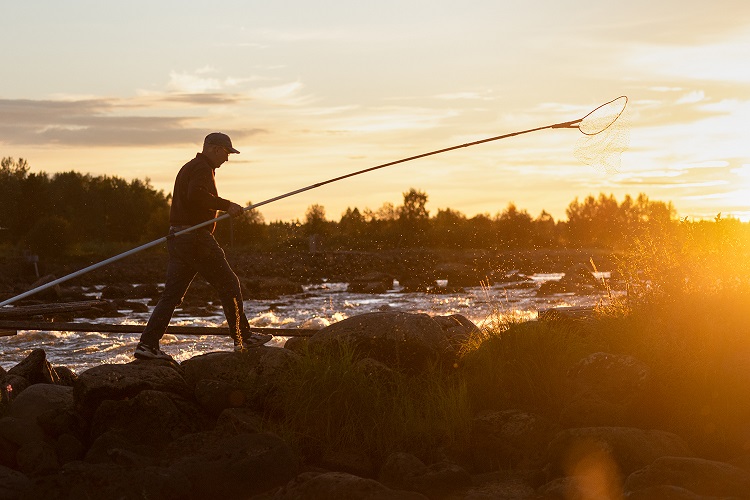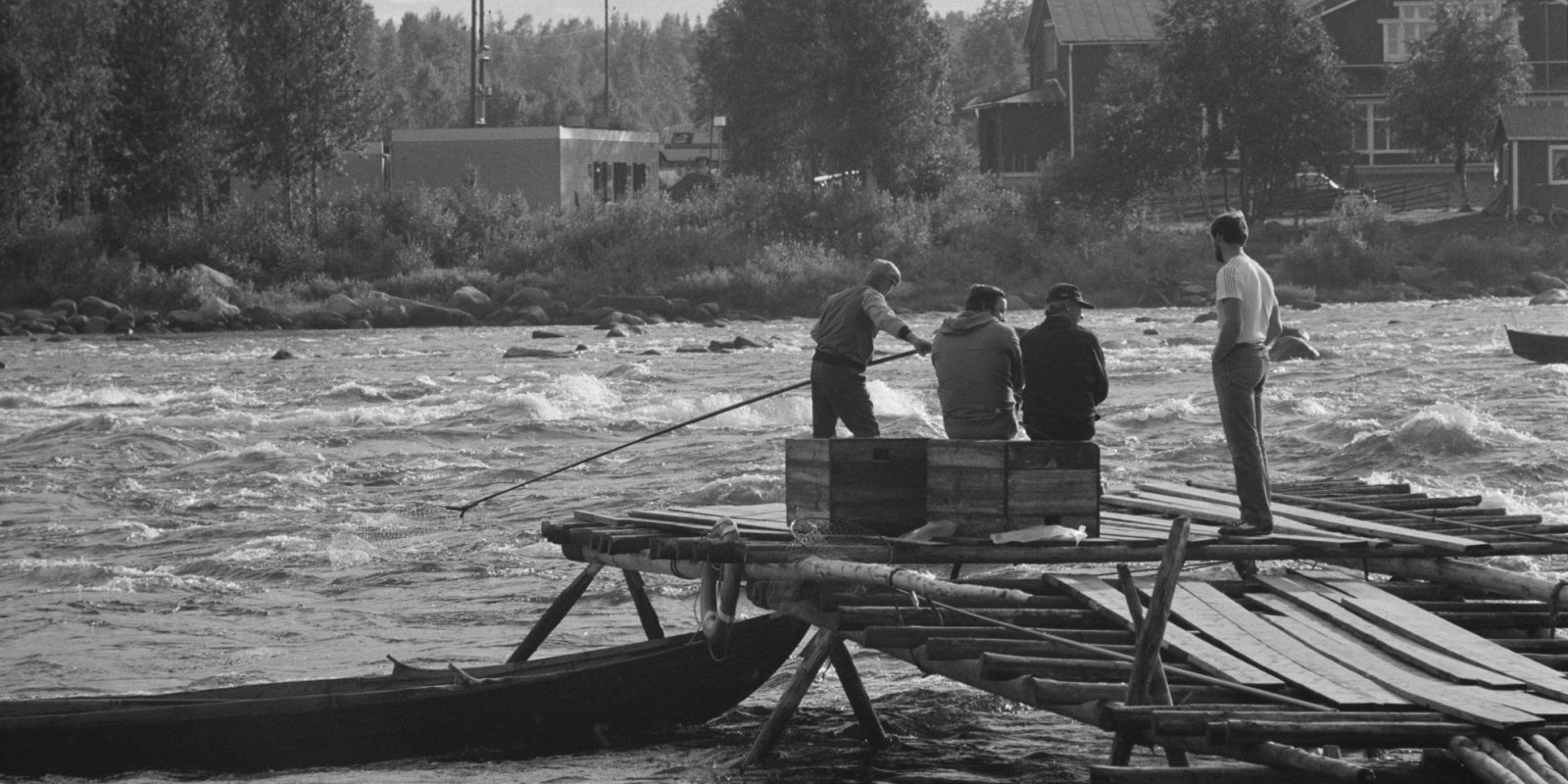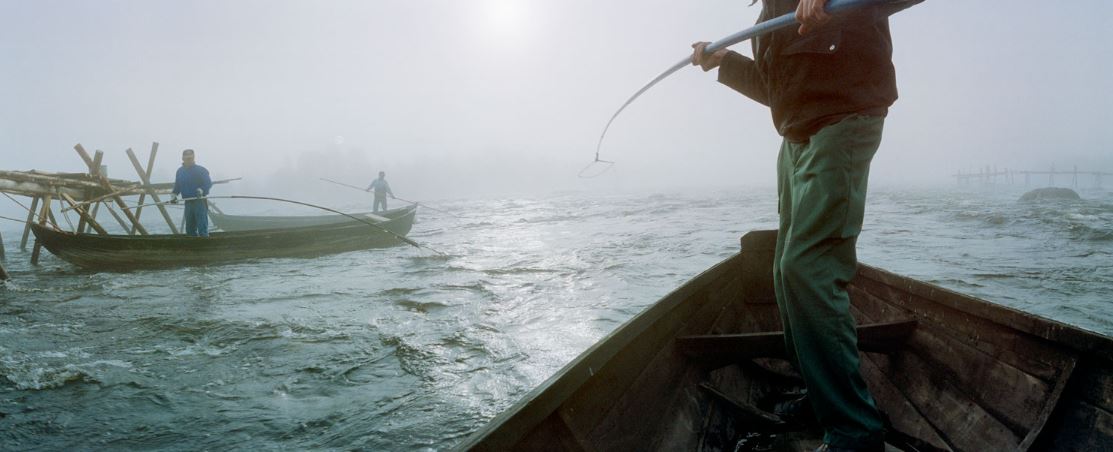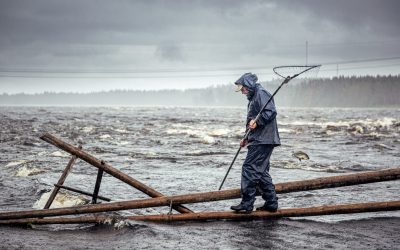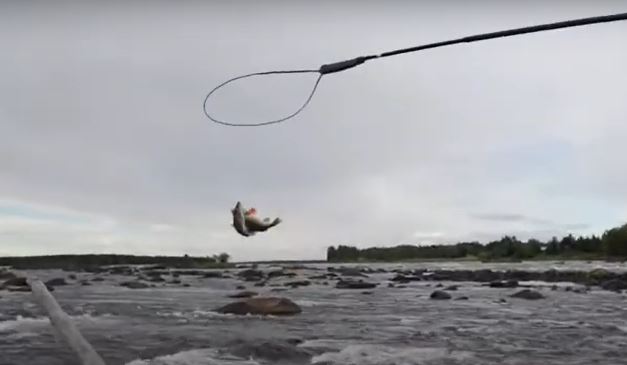Torne Valley’s living dipnet fishing culture
Torne River (Finnish: Tornionjoki, Swedish: Torne älv, Torneälven, Northern Sami: Duortneseatnu, Meänkieli: Väylä) dipnet fishing culture has been nominated by Sweden and Finland as a candidate to the UNESCO’s representative list of Intangible Cultural Heritage of Humanity.
Dipnet fishing is a living tradition that for several hundred years has united and engages residents by the Torne River on both the Swedish and Finnish sides of the border. The cross-border cultural heritage is everyday for local people, but unique in the world, and part of the identity of locals. It continues to be alive and is passed down from generation to generation. It involves specific and unique methods, craft skills, a sustainable relationship with nature, tools, cultural spaces and events in an authentic river rapids landscape.
The phenomenon is also characterized by the fact that it occurs and continues on both sides of the border river, within the territory of two different countries – one Kingdom and one Republic. Fishing culture and its practitioners are in close interaction with nature and its environment. The phenomenon has retained its distinctiveness, but developed and adapted to its surroundings and gained a new meaning as a reinforcement of society’s identity and a new kind of livelihood.
As a candidate for UNESCO’s list of intangible cultural heritage
Finland’s next destination to be added to UNESCO’s Intangible Cultural Heritage of Humanity list concerns the traditional dipnet fishing culture of Torne River. The proposal regarding cross-border river’s living heritage is prepared in cooperation with Sweden, i.e. the Swedish Institutet för Språk och folkminnen (ISOF) is responsible for coordinating the multinational application. For Finland, the Finnish Heritage Agency is responsible for the preparation in cooperation with the Torne Valley museum and the tradition practitioners. The application is to be submitted to UNESCO in March 2025. The decision on possible acceptance to the list would therefore be received in December 2026.
In November 2017, the Ministry of Education and Culture named Torne Rivers traditional rapid fishing culture to the National List of Living Heritage. It is included in the list in the subject area Nature and the Universe. Proposals are made from the national list to UNESCO’s international lists of intangible cultural heritage. In Sweden, Håvfisketraditionen i Tornedalen has been named to the national intangible cultural heritage candidate list in 2018.
So far, in Finland, the sauna tradition (2020) and Kaustinen fiddle playing (2021) have been nominated from Finland to UNESCO’s list of the intangible cultural heritage of humanity, as well as the Nordic tradition of clinkerboats (2021), in which Sweden is also included, as well as the knowledge, skills and techniques related to hand-made glass (2023) with five other country. In Sweden, the summer farming tradition (sw. fäbodkultur) was inscribed on the list together with Norway in 2024.
Timetable and procedure
The UNESCO application for the list of Intangible Cultural Heritage (ICH) consists of four components:
- Application form, approximately 15 pages
- A video presenting the tradition, 15 minutes
- Photos showcasing the tradition, a total of 10 photos
- Letters of consent from the community, individuals, and stakeholders to support the UNESCO application
Phase 1: Preparation and submission
31 March 2025: Deadline by which nominations must be received by the Secretariat. Files received after this date will be examined in the next cycle.
30 June 2025: Deadline by which the Secretariat will have processed the files, including registration and acknowledgement of receipt. If a file is found incomplete, the State Party is invited to complete the file.
30 September 2025: Deadline by which missing information required to complete the file, if any, shall be submitted by the State Party to the Secretariat. Files that remain incomplete are returned to the States Parties that may complete them for a subsequent cycle.
Phase 2: Evaluation
December 2025 – May 2026: Evaluation of the nominations by the Evaluation Body.
April-June 2026: Meeting for final evaluation by the Evaluation Body.
Four weeks prior to the session of the Committee: The nomination files and the evaluation reports are available on-line for consultation by States Parties.
Phase 3: Examination
November/December 2026: The Committee examines the nominations and makes its decisions.
Unesco convention for safeguarding the intangible cultural heritage
The UNESCO Convention for the Safeguarding of the Intangible Cultural Heritage is a joint agreement between the United Nations Educational, Scientific and Cultural Organization UNESCO and its member states, which was adopted by the UNESCO General Conference on October 17, 2003. Its objective is to promote the preservation of intangible cultural heritage by raising awareness of the importance of intangible cultural heritage at local, national and international levels in cooperation with communities, groups and non-governmental organizations and to offer international cooperation and assistance. The convention provides a framework for implementing the goals, but also leaves room for national interpretations and the freedom to choose the implementation method.
The Convention defines intangible cultural heritage as “practices, descriptions, expressions, knowledge, skills – and associated tools, objects, artefacts and cultural spaces – which communities, groups and in some cases individuals recognize as part of their cultural heritage”. UNESCO approved the agreement in 2003, but intangible cultural heritage as a phenomenon is as old as humanity. Its manifestations can be, for example, oral traditions, performing arts, practices of social life, rituals and celebrations, or information, skills and practices about nature and the universe. Intangible cultural heritage is preserved and transmitted alive and changing from generations to the next. According to UNESCO, this kind of cultural heritage can promote dialogue between cultures and strengthen people’s respect for different ways of life. Understanding intangible cultural heritage is particularly important in terms of the smooth coexistence of different minorities and the majority population and the preservation of cultural diversity.
There are currently 788 sites from 150 countries on the UNESCO lists of Intangible Cultural Heritage of Humanity.

